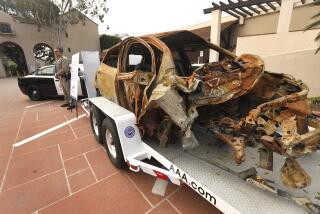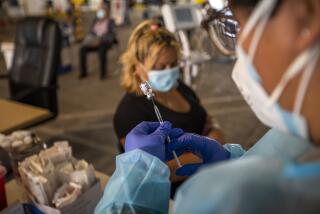The Belt of Life
- Share via
The lives of nearly 11,000 Americans were saved between 1983 and 1987 thanks to automobile safety belts. So reports the National Highway Traffic Safety Administration, which says that 6,900 of those lives were spared because of recently adopted state laws requiring seat-belt use. What value can be assigned to 11,000 lives that weren’t prematurely snuffed out? It is impossible to say. It is possible to recognize the grief and loss that were avoided because of the prudent and simple use of seat belts.
An NHTSA survey based on 98,000 observations in 19 cities finds 46% of drivers now using seat belts, an all-time high. State laws on seat belts apply in 13 of the cities surveyed. In those cities belt use averaged 51%. Seattle, where 61.4% of drivers were observed with seat belts in place, had the highest level of usage. Providence, at 17.6%, had the lowest. It is no coincidence that Washington state has a safety-belt law in effect while Rhode Island does not. Belt usage in California, where a law is in effect, was 58.9% in San Diego, 58.4% in San Francisco and 49.2% in Los Angeles.
Six years ago only about 11% of front-seat vehicle occupants nationwide made use of seat belts. The higher compliance rate today has helped, the NHTSA says, to make the nation’s highways safer than ever before. The fatality rate, the best measure of risk, was 2.4 per 100 million miles of travel last year--the lowest in history.
All this is encouraging, but the improvement in safety is still a long way from what could be achieved. Currently 32 states and the District of Columbia have safety-belt-use laws. The goal of nationwide seat-belt usage is well worth pursuing. The NHTSA estimates that if all vehicle occupants wore safety belts in 1987, more than 15,000 people who died in vehicle accidents would still be alive.






